Image
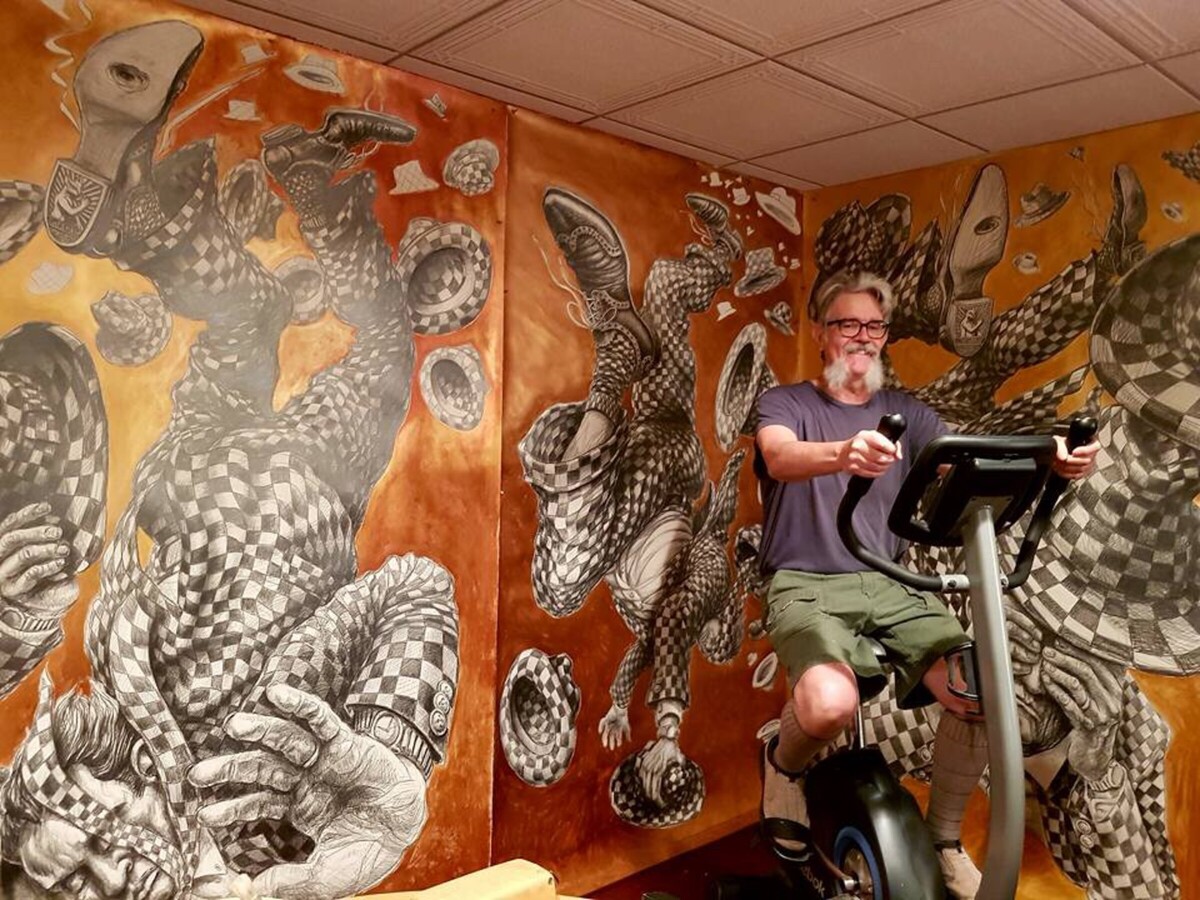
by Jane Stahl
Ed.: As part of the "ROY G BIV" exhibit at Studio B, Jim Meehan again showcases his intriguing perspective in work featuring each of the seven colors. His work captures attention and study in each exhibit that Studio B mounts. People marvel at his vision and artistic ability. And we at Studio B just love him!
Greg Constantine's best-selling print "Art Doesn't Have to Match the Couch" is a perfect expression of how we all need to push the envelope, and illustrator Jim Meehan provides perfect award-winning art that does just that.

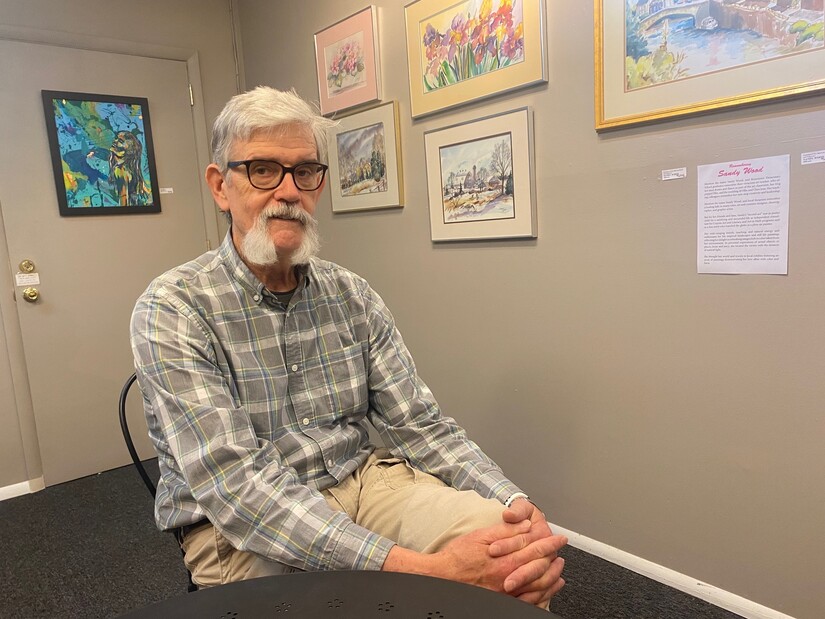
Artist Jim Meehan earns accolades and awards regularly at Studio B Fine Art Gallery for his illustrations and line drawings. He notes, “I’ve probably framed a third of the award certificates I’ve received; they’re very important to me.” An admirer of surrealist painters, he considers himself a cartoonist like his father and admits, “My intent is to be obscure. I’ve never wanted to paint pretty pictures.”

He continues, “Working in a number of different media including pen and ink on paper, acrylic paint on canvas and mixed media collage, I like to draw from my head: visualize things.

I find this technique to be a very satisfying form of expression, as if I were explaining something to myself, working it out, surprising myself a bit. My best hope is that the visual ideas I create will be interesting for me to do and entertaining for the viewer to look at.”

Jim was born in Brooklyn, NY, in 1952, graduated from Fordham University with a BS in Psychology, and attended the School of Visual Arts for two years where he learned about the schism between fine art and commercial art.
Jim’s father was an artist for New York newspapers and insisted Jim not follow an art career but pursue a professional career instead. Unclear about his path after high school, Jim’s older brother, a doctor, suggested he become one, too. And so, Jim’s first major in college was Biology although he switched to a psychology major before long which may, to some unconscious degree, explain his “heads” series. “Wallet Head,” and “Hammer Head,” for example, may well “illustrate” personality types.
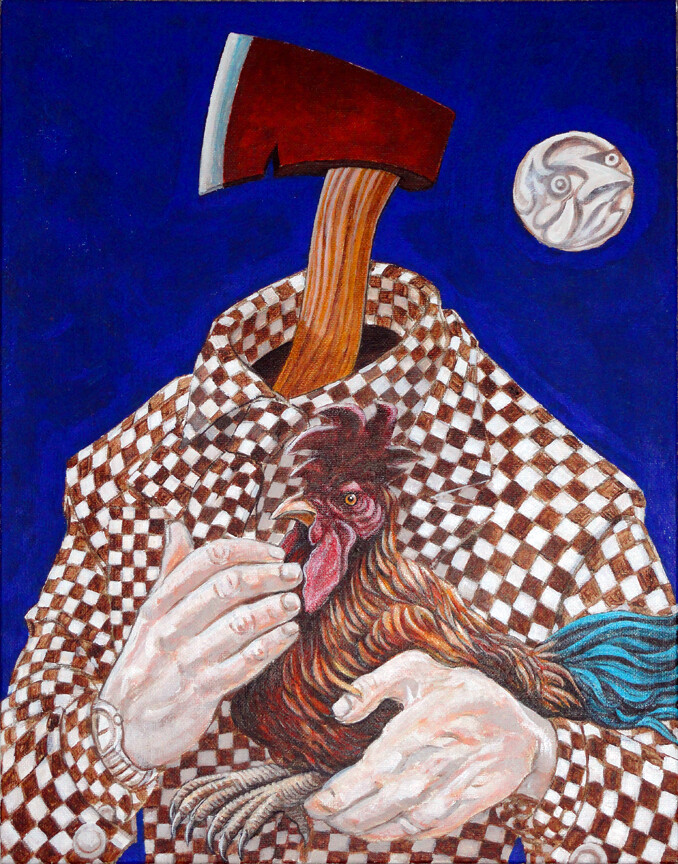
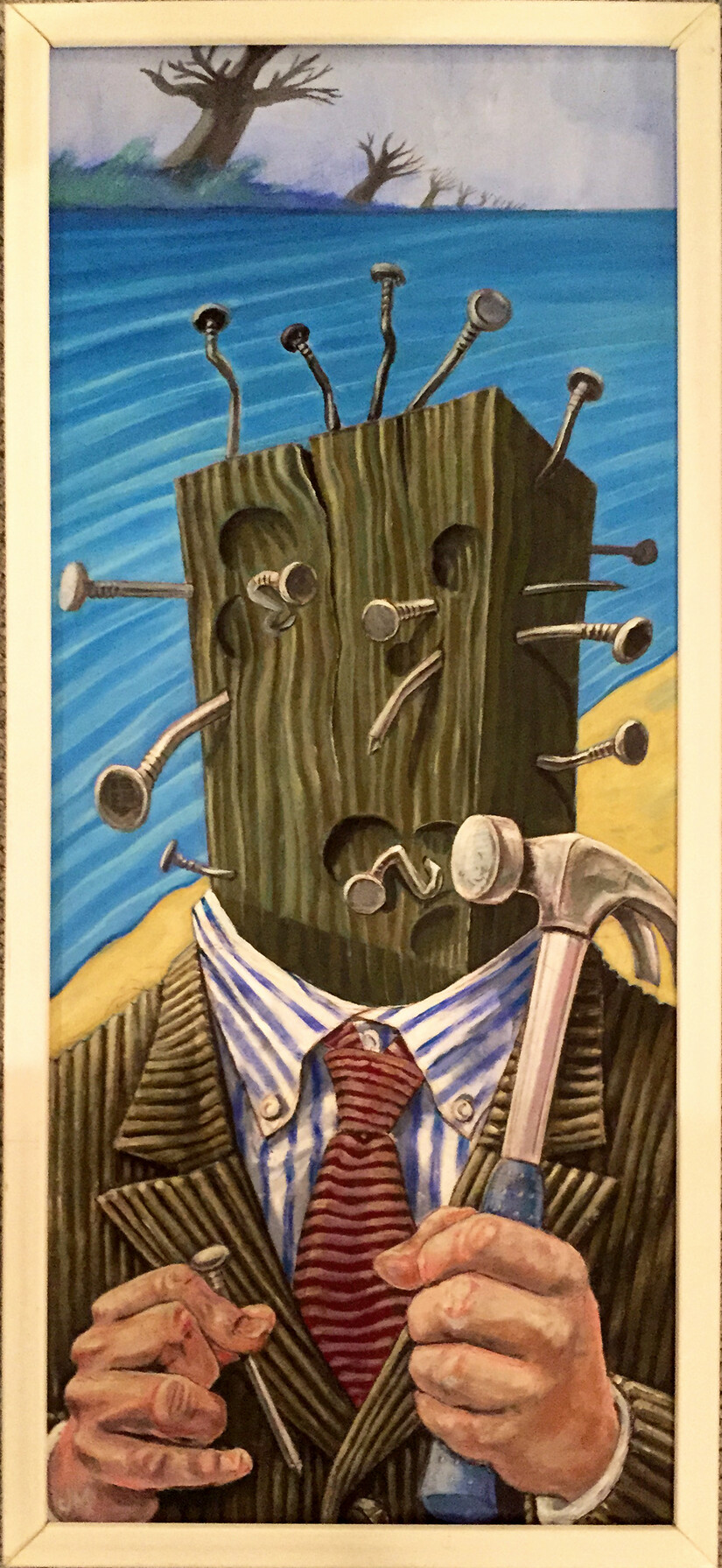
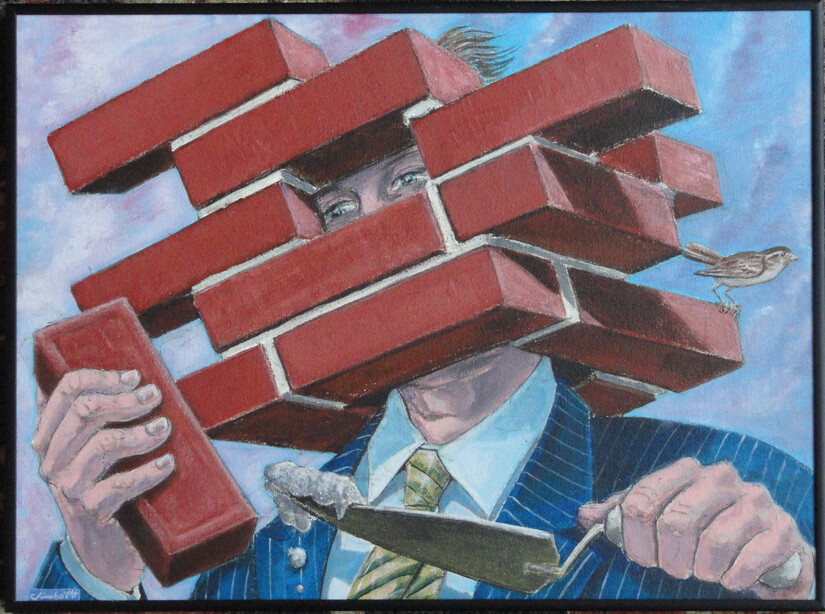
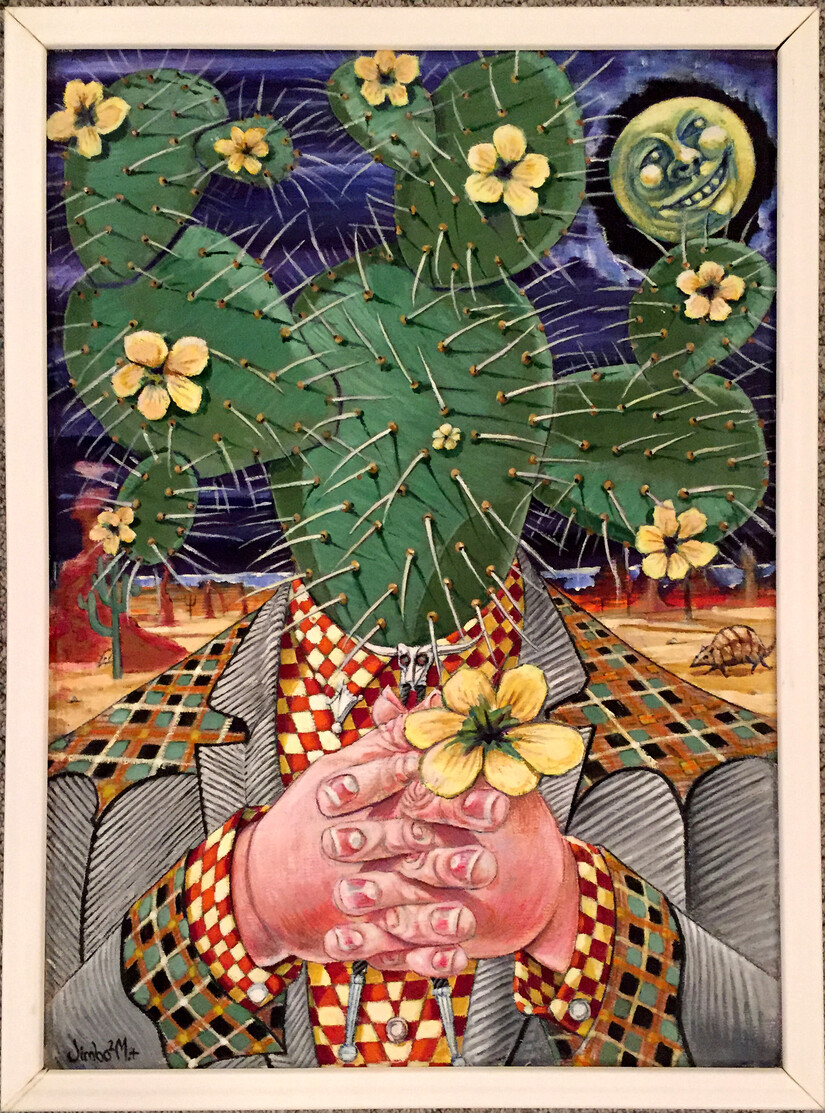
“I’ve always wanted to be an artist like my dad; it’s the thing I did!” His father’s influence in producing old-fashioned line art in pen and ink, needing it to be “clean” for printing purposes, is existent in Jim’s work. Jim says, in fact, “My art is just like Dad’s.” Other influences include the religious work of Albrecht Dürer and Hans Holbein, northern Renaissance painters.
“I was intrigued by the tools of the trade that defined the subject’s careers in the foreground of the fabulously-rendered portraits with maybe an Oriental rug on the table and the subjects’ costumes that showcase their wealth, status or power with more complicated matters in the background.
“There’s spiritual psychology and intense detail in their work that I like—so much personality in these 500-year-old portraits. But people have difficulty with religious subjects so I avoid it. Still, I admired mosaics in black and white, a sculpture in the vestibule of a church—a battle of the angels—depicting St. Michael slaying the devil. This arch angel driving a spear into the devil was remarkably complicated and convoluted, displaying intense detail.
“I attended Catholic schools; and so, images of Jesus and objects of Christianity are happy subjects for me, a big part of my mind. Crucifixes are a favorite topic. I loved the art in church--stained glass is great. The stations of the cross tell stories; the drama and craftsmanship are inspiring. Sadly, stained glass is not often found in modern churches; no one does that work today.”
Telling stories is part of Jim’s work—“but subtle,” he insists; “I don’t want to be didactic or boring. I don’t start off with a story in mind. I’m really just entertaining myself. I’ll start with something in the middle of the page and go from there, edge to edge…in small segments of time; it’s really a stream of consciousness technique. There’s no real plan…I just try to keep it interesting for myself because, well, I have a short attention span. I’ll eventually peter out, figure it’s good enough, and quit.
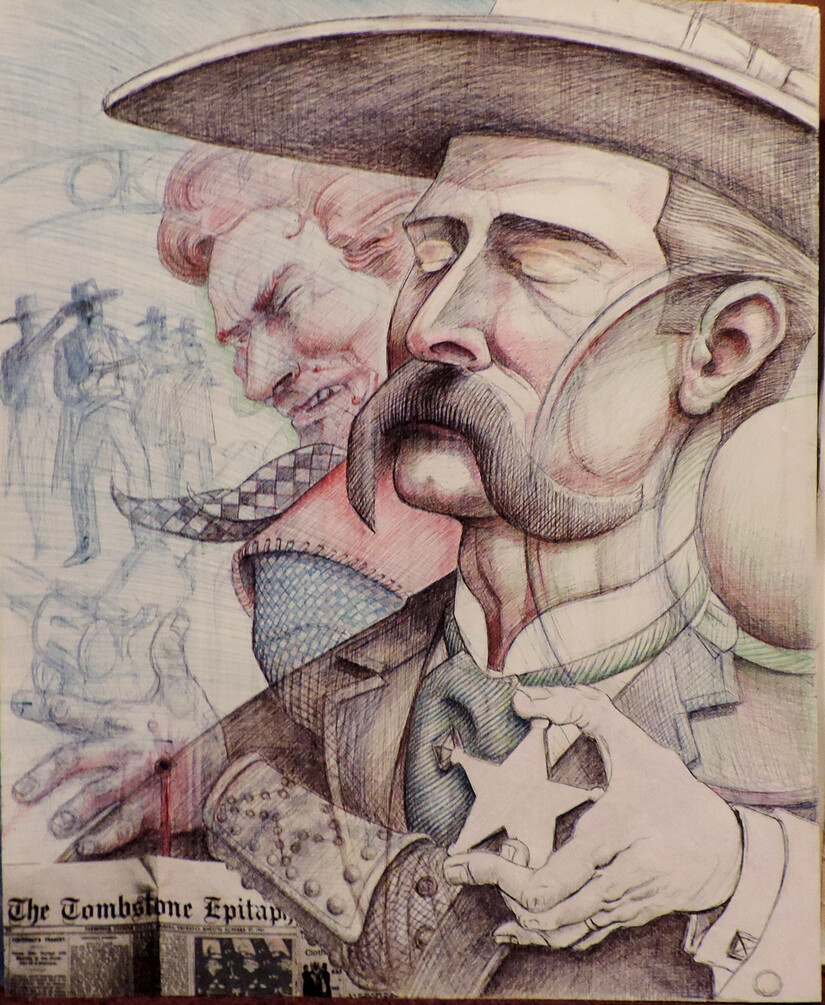
“I draw from life, from my head, from a serious idea and sometimes risk getting punched in the nose while observing people too closely. I’ll sketch an outline in pencil, drawing contours with a razor-tip marker, prepare a grid for the plaids and checkerboard—always a checkerboard; I love checkerboards, then color in with gray—it’s very satisfying to color in. I try to keep things light."
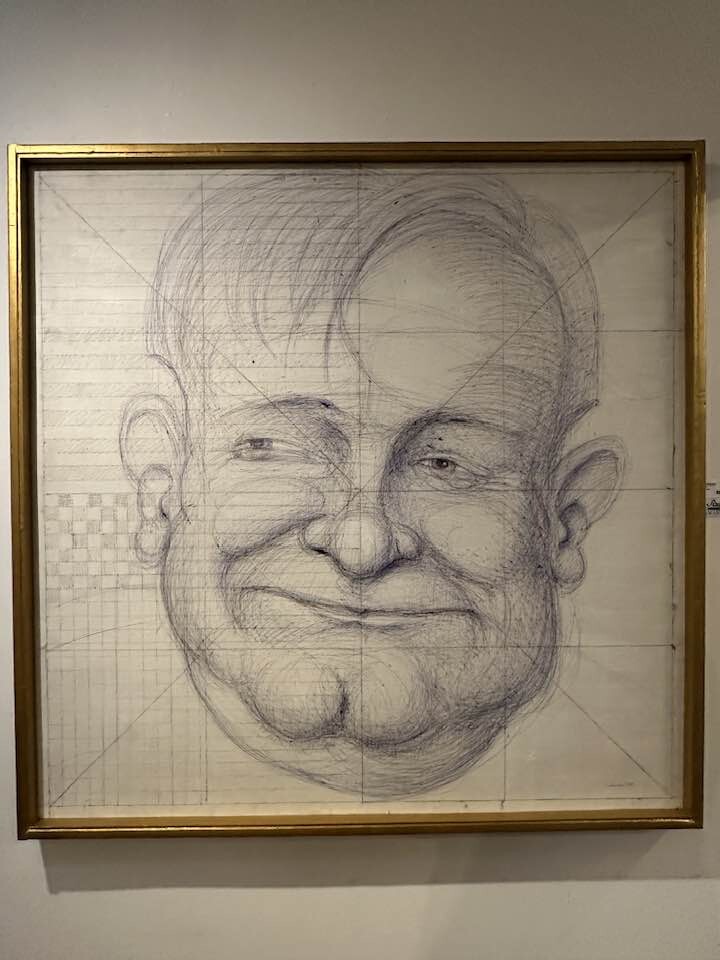

(Checkerboards are ubiquitous in Jim’s world. He says they take on a life of their own.)
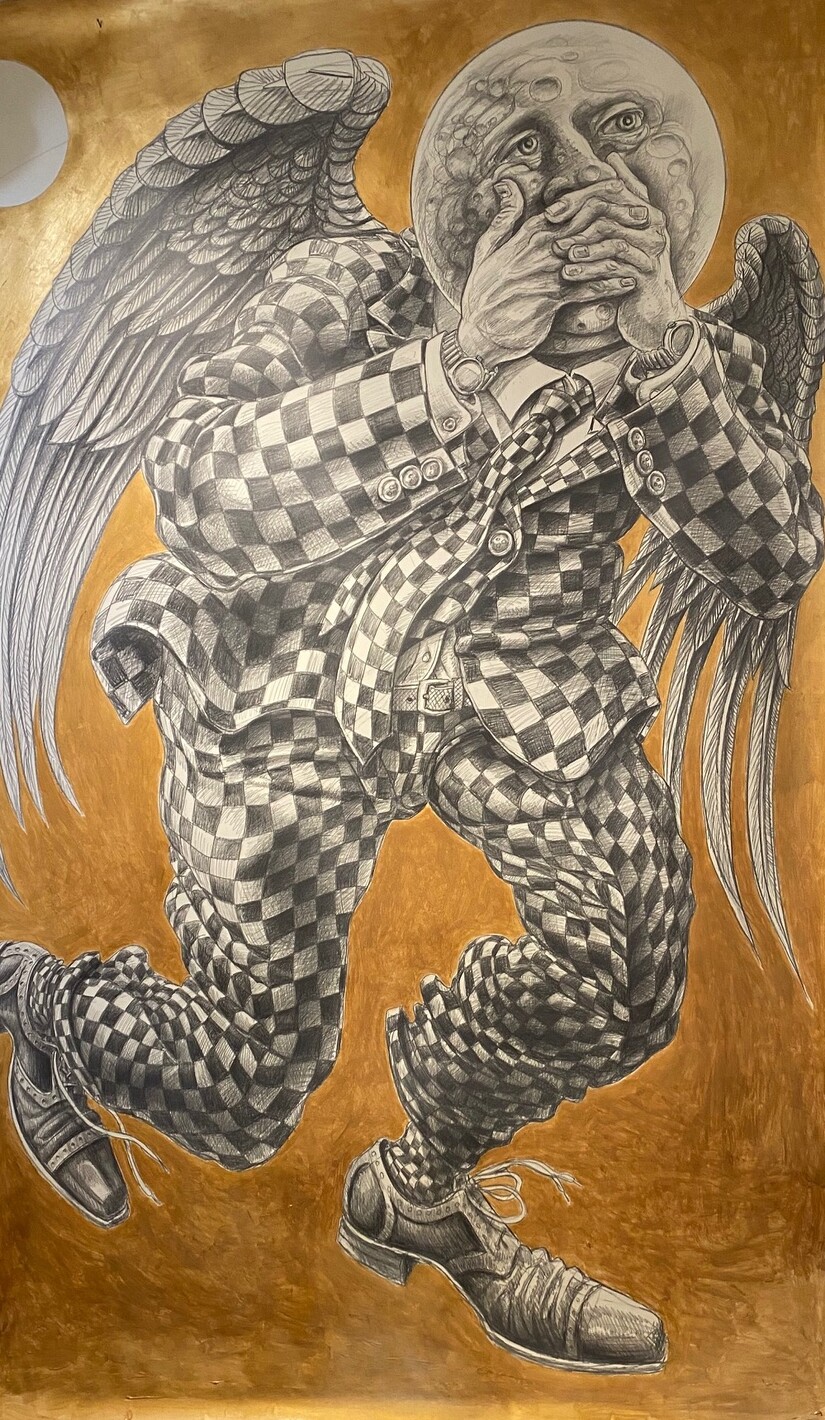
“I usually have something in mind and always have pad and pencil in hand; something on TV may catch my attention. Today I’m focused on classical art; you’ll find symbols of the Roman world in my work or a cyclops or minotaur may show up."
Some of Jim’s pieces cover an entire wall like one he admired in Manhattan titled “The Peasant Wedding” while walking by the window of a drycleaning venue. His 4’ x’8’ piece included himself, his sons, a gang of kids, some mothers, and a drunken actor in a park he often visited.
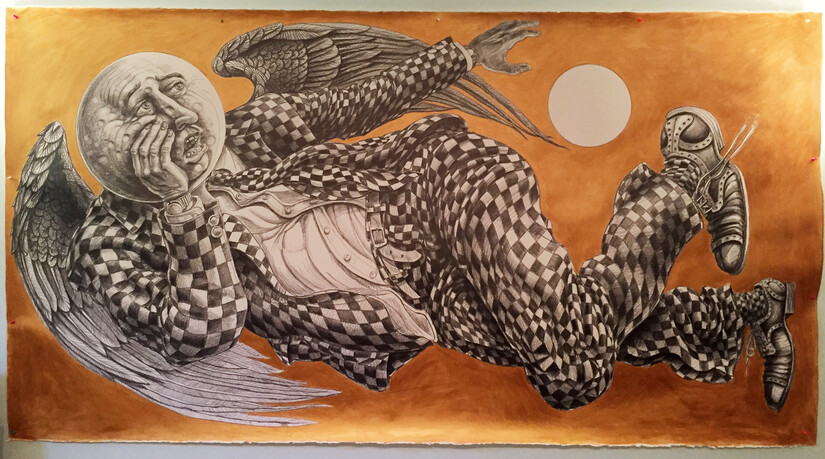
For many years Jim was a full time “Mr. Mom” for his three sons while wife Deborah, worked. “I’d take my sketch pad on the subway or to the park –the ladies were always so nice to me.
“And I’d draw for hours in the car as part of surviving ‘Alternate Side of the Street Parking,’” a challenge that living in New York presents for car owners. Jim describes his challenges of owning one:
"’Alternate Side of the Street Parking’ is a NYC phenomenon. If you have a car in the city and can't afford to put it in a garage which is like a second rent usually, you can park in the street. The problem is you have to move it so that the street sweepers can sweep [supposedly]. So the city created a schedule of 3 days legal, get the car out for 3 hours [11 to 2] on Tuesday, repeat on Friday or Monday and Thursday for the other side of the street. Weekends were legal.
“‘The competition for a space was fierce, and the fines were stiff. Plus, you had to be home during the day so it was a real pain in the neck. You'd get the car out and find a meter then run down an hour early and put it in a space and wait until it was legal. If the cops came by you were OK as long as you were in the car otherwise, you'd get a ticket. I always had a child with me too but it was a good place to draw. We only had a car because we went to our barn upstate. It was too much trouble otherwise plus the car got dinged and broken into regularly. Having a space became a neurotic obsession. I think I was scarred for life by parking in NYC."
“Through the years I’ve been printed in many publications and have participated in numerous group shows but I gave up trying to sell my work. There is so little call for illustrators today."
Times change; Jim’s father’s artistic journey, and Jim’s as well, are tales of the resilience and flexibility needed to survive as an artist. But, as art is often acknowledged to be one of the best types of investments, so much of it today is mass-produced, discouraging to emerging artists today.
But people recognize the talent. At Studio B, Jim’s work is often the most studied. There are allusions, symbols, messages, obvious intent in the many images in his detailed renderings. Intrigued and curious, spectators…and jurors…appreciate the unique subject matter, the complexity of the art, the skill employed in the technique and the enigmatic, cryptic artist’s mind—obscure, just as he intended.
A personal favorite: All the World's a Stage

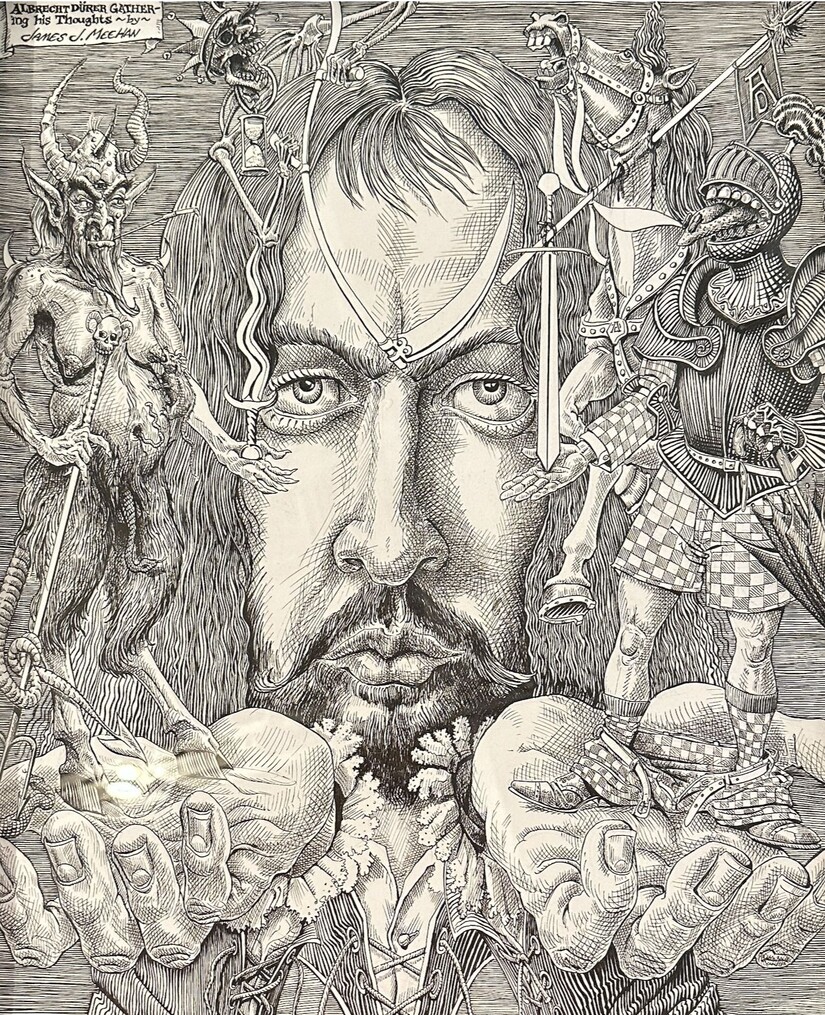
Find Jim’s episode on the “B Inspired” podcast on your favorite platform including Spotify, Google, Castbox, Breaker, Overcast, Pocket Casts, and RadioPublic, and Apple. On Spotify:https://podcasters.spotify.com/pod/show/jane-stahl/episodes/Jim-Meehan-Eager-to-Be-Obscure-e295eed